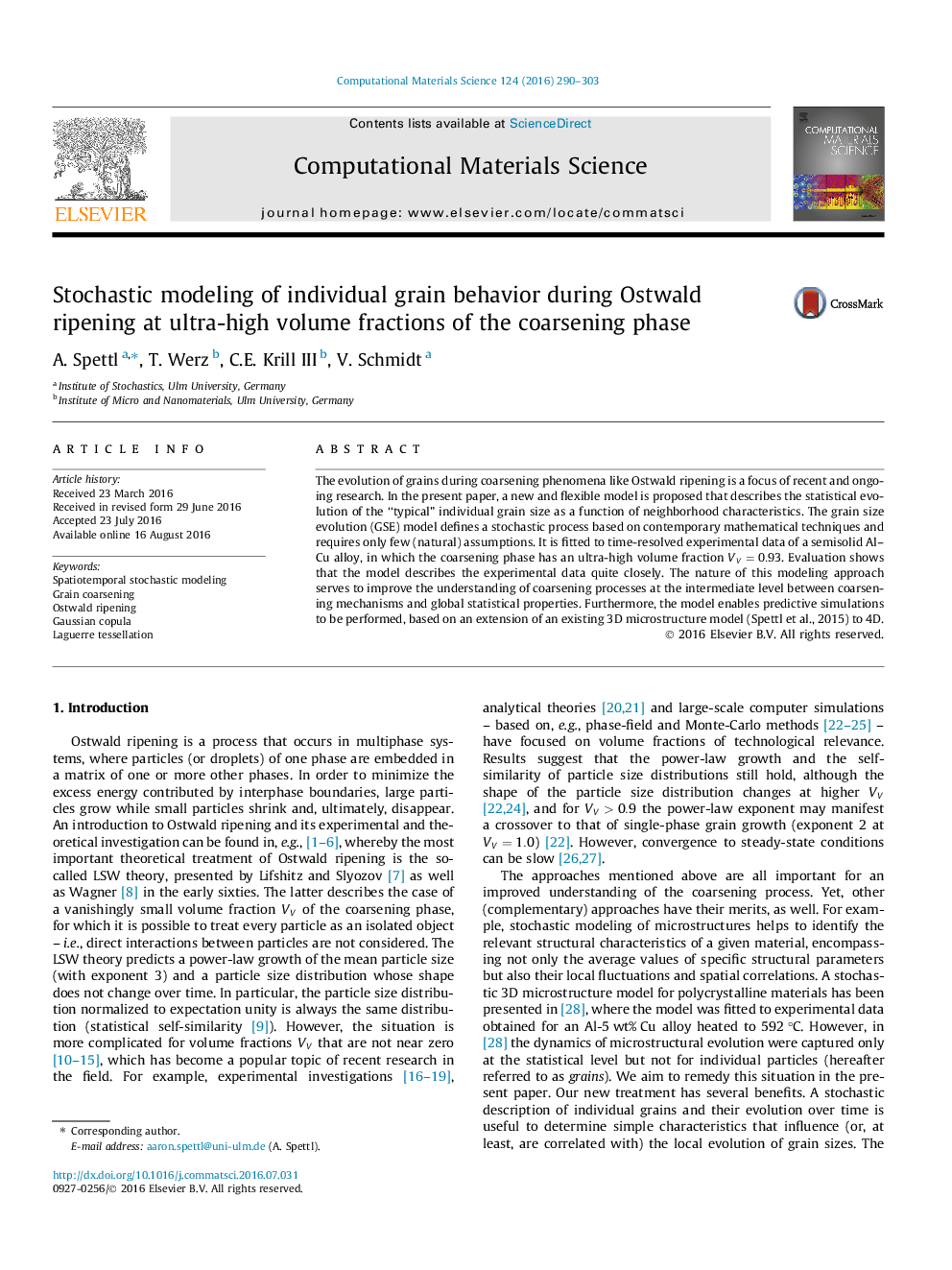| Article ID | Journal | Published Year | Pages | File Type |
|---|---|---|---|---|
| 1559796 | Computational Materials Science | 2016 | 14 Pages |
•A novel stochastic model predicts the evolution of grain radii during coarsening.•The influence of grain neighborhoods on coarsening is taken into account.•Missing factors influencing growth are modeled as random noise.•Validation is performed against 3D time-resolved measurements of semisolid Al–Cu.
The evolution of grains during coarsening phenomena like Ostwald ripening is a focus of recent and ongoing research. In the present paper, a new and flexible model is proposed that describes the statistical evolution of the “typical” individual grain size as a function of neighborhood characteristics. The grain size evolution (GSE) model defines a stochastic process based on contemporary mathematical techniques and requires only few (natural) assumptions. It is fitted to time-resolved experimental data of a semisolid Al–Cu alloy, in which the coarsening phase has an ultra-high volume fraction VV=0.93VV=0.93. Evaluation shows that the model describes the experimental data quite closely. The nature of this modeling approach serves to improve the understanding of coarsening processes at the intermediate level between coarsening mechanisms and global statistical properties. Furthermore, the model enables predictive simulations to be performed, based on an extension of an existing 3D microstructure model (Spettl et al., 2015) to 4D.
